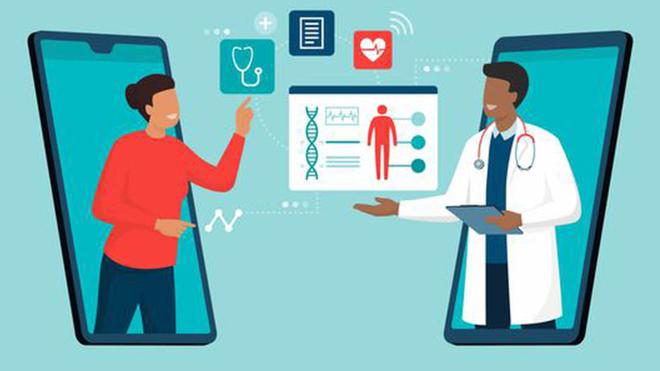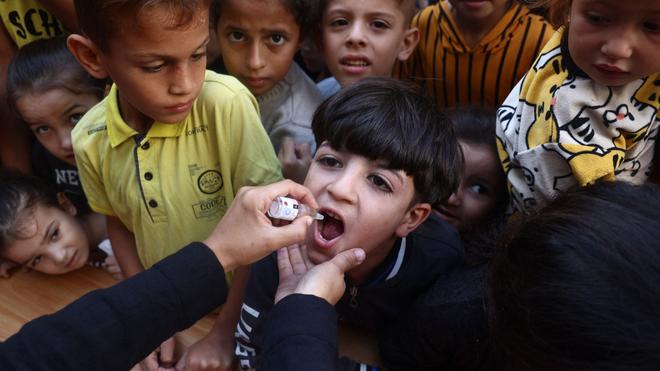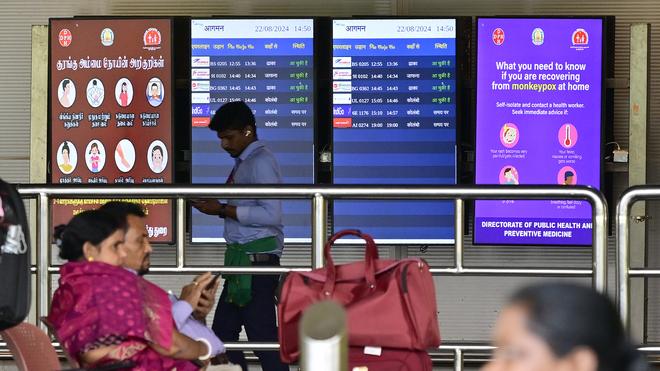Telemedicine in India: is the government’s eSanjeevani platform living up to its potential? Premium
On a hot day earlier this year, a 30-year-old from far-flung Aangamoozhy in Pathanamthitta district in Kerala arrived at a primary health centre (PHC) to check out a patch of discolouration on his skin. The medical officer at the PHC thought that the lesion looked suspicious and suggested a dermatology consult.
“If I had sent him off with a referral to the specialist at the Konni Medical College nearly 50 km away, he would never have gone: he would lose a day’s work in travelling back and forth, plus there would be a long waiting line at the medical college hospital. Our nurse put him on a telemedicine consult through the government’s eSanjeevani portal the next day, and uploaded a picture of the skin patch. And just like that, we had picked up a case of leprosy!” the medical officer said.
Telemedicine in India has been evolving over the past two decades, after the first telemedicine pilot project was set up in 2001, with the help of the Indian Space Research Organisation (ISRO), linking Chennai’s Apollo Hospital with the Apollo Rural Hospital at Aragonda village in Chittoor district of Andhra Pradesh.
Subcentres and PHCs serve as spokes, while district hospitals and medical colleges (specialist centres) act as the hubs. In March 2023, the enhanced eSanjeevani 2.0 was introduced, incorporating telediagnosis by integrating point-of-care diagnostic devices (PoCDs).
eSanjeevani offers features such as queue management for OPD services, audio-video consultations, and e-prescriptions. Patients also receive SMS notifications for registration and prescriptions.
The eSanjeevani website boasts impressive figures -- over 3.2 crore patients served at over 1,28,765 health & wellness centers (as spokes) through 16,360 hubs and over 130 specialities serviced by more than 2,20,291 doctors/healthcare workers as of October 30 this year. However, serious doubts have been raised as to whether these numbers tell the true story on the ground.
Dr. Bhagyasree added: “Also, e-Sanjeevani is a free service. Unless we generate revenue, we will not be able to invest money in any expansion projects or press more doctors into service. Doctors are overburdened in clinics and they do not want to get held up on calls when they could be treating people. Without a revenue-generating model and the right incentives, it would be difficult to scale up the service.”
Take the example of Kottayam district in Kerala for instance: the need for telemedicine services is acute, and yet the system is overwhelmingly understaffed: of the 400-odd doctors in Kottayam district, not more than four or five doctors are on board the eSanjeevani platform.
The authors also highlight many important problems linked to the design and practice of triage and tele-referral nationally, within eSanjeevani. Several of these have to do with the staff and technology: the lack of general practitioners or GPs within the tele-referral pathway; inadequate training of health-workers leading to inappropriate and ineffective consultations; outdated or absent technological support; the absence of mechanisms for re-referrals; and lack of feedback loops are some of the factors the paper cites as coming in the way of optimising the full potential of eSanjeevani .
“Everyone seems to equate the effectiveness of the portal with the number of calls coming into the system. However these statistics are blind to issues like staff struggling with technical challenges, the general resistance of doctors as well as patients to adapt to the remote mode of consultations, poor reimbursement given to staff/doctors, low levels of e-literacy and the need for improved engagement with medical college hospitals. While it is true that tele consultations are filling a gap, much more needs to be done so that the tele services can be escalated to medical colleges and other tertiary level/premier healthcare institutions, optimising the potential of the portal” says V.S. Divya, the former nodal officer of e-Sanjeevani in Kerala.
Network and connectivity issues mean that a doctor could be spending over 10 or 20 minutes on a single referral call, which does not sit well with doctors in busy medical colleges, point out experts | Photo Credit: Freepik
Low doctor-patient ratio in the public health system is one of the factors resulting in calls queuing up, sub-optimal consultations and referrals, and doctors refusing to be part of tele consultations because their own outpatient departments in hospitals might be overflowing. Network and connectivity issues mean that a doctor could be spending over 10 or 20 minutes on a single referral call, which does not sit well with doctors in busy medical colleges. Super-speciality consultations are thus hard to access in most cases .
“Technical glitches are only a part of the problem. It is administrative issues and lack of enthusiasm on the part of specialist doctors which seem to prevent us from exploiting the full potential of eSanjeevani. No one seems to be looking at the larger picture, that the footfalls in busy OPDs in medical colleges can be reduced if tele consults, especially follow-up calls, are streamlined and integrated into general practice. It should be the task of administrators to make this easy for busy specialities,” points out a public health official
The Lancet study also points to the need to integrate the regular practice of doctors into the referral flow within eSanjeevani, which would allow for better utilisation of resources at both ends of the referral chain, whether in-person or online.
Very few doctors on the system apart, various studies have identified other barriers such as unreliable internet connectivity, insufficient infrastructure, socio-cultural preferences of doctors for in-person consultations, lack of knowledge and insufficient training, quality of care concerns and fear of medico-legal issues for the wholehearted acceptance of teleconsultations. That eSanjeevani still does not cater to all regional languages is another hurdle.
Ensuring continuity of care is another issue: a consultant has no access to past medical records of a patient and while the Electronic Health Records (EHRs) service for citizens has not materialised as envisaged by the government, it should be possible to integrate a patient’s current health records to the portal via e-health for doctors to access.
Dr. Ganapathy however, brushed aside concerns raised by doctors about the risks of assessing a patient remotely, stakes raised by insurance companies and possible medico-legal issues that might crop up. “The Central government has come out with a modified version 2.0 of the Telemedicine Practice Guidelines notified in 2020 and it is unfortunate that most doctors do not read or understand this. The fears are totally unfounded. Telemedicine is a sophisticated triage directing a patient what to do – it is not diagnosis and treatment all the time. A teleconsultant is expected to be mature enough to understand the limitations of remote diagnosis,” he pointed out.
In the nearly five years since eSanjeevani was adopted as the nation’s tele-health platform, apart from counting the number of calls coming in as a measure of the success of the initiative, there seem to have been no meaningful studies to measure various aspects of utilisation, the level of public awareness about the platform, the quality or outcome of calls, the nature and proportion of healthcare requirements being met or beneficiary satisfaction levels.
“The return on investment for telemedicine cannot be quantified like it can be done in the case of a CT or MRI machine. The returns are often intangible. No proper scientific study has been done quantifying the actual satisfaction, economic savings, reduction of mortality or morbidity, etc, which alone can measure the difference that telemedicine has made regarding health service delivery. Viability and sustainability also matters, at the end of the day. Unfortunately, a prospective, well-designed study would be time-consuming and labour-intensive, apart from the funding required,” Dr. Ganapathy said.
Going forward, The Lancet paper suggested that healthcare workers, GPs, specialists and patients using eSanjeevani should be surveyed to reveal factors that influence its optimal use. ”Insights thus gained can directly inform the design and implementation of eSanjeevani, its SOPs, and its training curriculum, including effective triage and referral…dynamic and transparent data collection, processing, and analysis must be integrated into eSanjeevani’s official dashboard. This would facilitate transparent and effective program evaluation, beyond merely counting referral numbers as metrics of success.”
While it is important to note that telemedicine alone cannot bridge the urban rural health divide, it could be one step towards addressing healthcare needs in regions that desperately need them. The Central and several State governments are taking baby steps but they can do much more to hasten the adoption of telemedicine, said Dr. Ganapathy. Social, economic, cultural factors need to be addressed, even as changing the mindsets of beneficiaries and healthcare providers remains crucial, alongside making adequate bandwidth available in order to utilise the full potential of telemedicine in India.
Published - October 31, 2024 10:00 am IST






)
)
)
)
)
)
)
)


)
)
)
)
)
